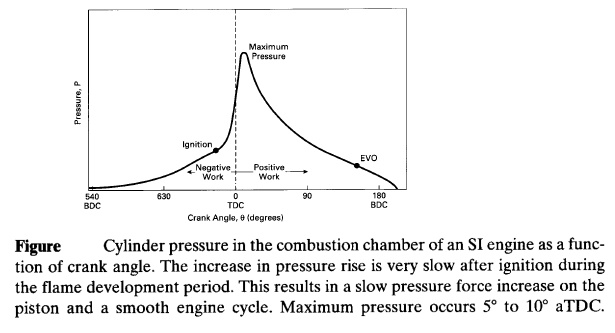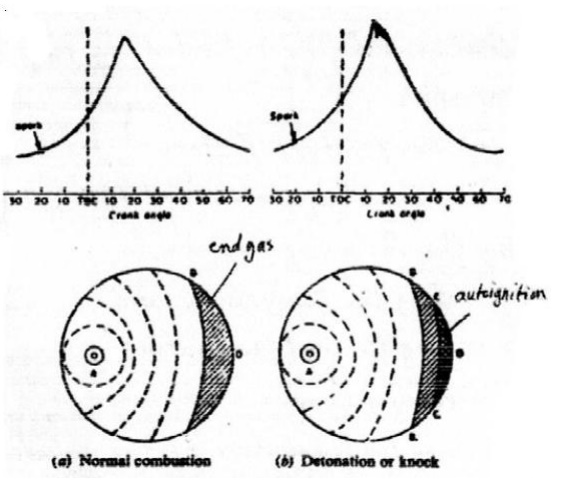Chapter: Mechanical : Advanced IC Engines : Spark Ignition Engines
Combustion In SI Engines
COMBUSTION IN SI ENGINES
The
combustion process of SI engines can be divided into three broad regions: (1)ignition
and flame development, (2) flame propagation, and (3) flame termination. Flame
development is generally considered the consumption of the first 5% of the
air-fuel mixture (some sources use the first 10%). During the flame development
period, ignition occurs and the combustion process starts, but very little
pressure rise is noticeable and little or no useful work is produced (Fig.
7-1). Just about all useful work produced in an engine cycle is the result of
the flame propagation period of the combustion process. This is the period when
the bulk of the fuel and air mass is burned (i.e., 80-90%, depending on how
defined). During this

time,
pressure in theexpansion stroke. The final 5% (some sources use 10%) of the
air-fuel mass which burns is classified as flame termination. During this time,
pressure quickly decreases and combustion stops. Inan SI engine, combustion
ideally consists of an exothermic subsonic flame progressing through a premixed
homogeneous air-fuel mixture. The spread of the flame front is greatly
increased by induced turbulence, swirl, and squish within the cylinder. The
right combination of fuel and operating characteristics is such that knock is
avoided or almost avoided.
Types of combustion:
1. Normal
Combustion.
2. Abnormal
Combustion.
Normal Combustion:
Normal
combustion rarely occurs in a real engine without some trace of auto ignition
appearing. After ignition, the flame front travels across the combustion
chamber. The gas a heat of the flame front called the "end gas ". The end gas receives
heat due to compression by expanding gases and by radiation from the advancing
flame front, therefore, its temperature and density increases. If the
temperature exceeds the self – ignition temperature and the un-burnt gas
remains at or above this temperature for a period of time equal to/or greater
the delay period, spontaneous ignition(or auto ignition) will occurs at various
locations. Shortly after words an audible sound called knock appears.
If the
end gas does not reach its self-ignition temperature, the combustion will be
normal.

Related Topics